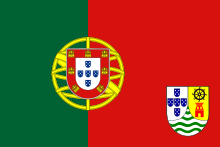Language/Indo-portuguese/Vocabulary/Fruits
Hi Indo-Portuguese learners! 😊
In this lesson, we will learn the vocabulary related to fruits in Indo-Portuguese. Fruits are an important part of our diet and learning the names in different languages is always a fun exercise. Let's get started!
Don't miss the chance to check out these pages as you wrap up this lesson: Drinks & Geography.
Basic Fruits[edit | edit source]
Let's start with some basic fruits that we all love. Here are the most common ones:
| Indo-Portuguese | Pronunciation | English |
|---|---|---|
| Maanga | /mɐˈɐɡə/ | Mango |
| Banãna | /bɐˈnɐnə/ | Banana |
| Uvas | /ˈu.vɐʃ/ | Grapes |
| Figo | /ˈfi.ɡu/ | Fig |
| Abacate | /ɐ.bɐ.ˈkɐ.tɨ/ | Avocado |
| Melão | /mɨ.ˈlɐ̃ũ/ | Melon |
It's important to note that the word "uvas" is used in the plural form, even when referring to a single grape. For example, "Eu quero comer uma uva" (I want to eat a grape) becomes "Eu quero comer uvas" (I want to eat grapes).
Let's practice with a dialogue:
- Person 1: Eu adoro manga! (I love mango!)
- Person 2: Eu prefiro banana. (I prefer banana.)
Exotic Fruits[edit | edit source]
Indo-Portuguese also has some interesting names for exotic fruits that are commonly found in tropical regions. Here are a few examples:
| Indo-Portuguese | Pronunciation | English |
|---|---|---|
| Caju | /kɐ.ˈʒu/ | Cashew |
| Jaca | /ˈʒa.kɐ/ | Jackfruit |
| Limão | /li.ˈmɐ̃ũ/ | Lime |
| Tamarindo | /tɐ.mɐ.ʁĩ.ˈdu/ | Tamarind |
| Abacaxi | /ɐ.bɐ.ka.ˈʃi/ | Pineapple |
| Goiaba | /ɡɔj.ˈɐ.bɐ/ | Guava |
It's interesting to note that the word "caju" is used to refer to both the fruit and the nut of the cashew plant. Also, the mature fruit of the jackfruit is often used as a meat substitute in vegetarian dishes.
Let's practice with a dialogue:
- Person 1: Você já experimentou tamarindo? (Have you tried tamarind?)
- Person 2: Sim, é bem azedo. (Yes, it's quite sour.)
Regional Fruits[edit | edit source]
Finally, let's take a look at some regional fruits that are mostly found in specific parts of Indo-Portuguese speaking countries.
| Indo-Portuguese | Pronunciation | English | Region |
|---|---|---|---|
| Jambo | /ˈʒɐ̃.bu/ | Rose apple | Brazil |
| Jamun | /ʒɑːˈmuːn/ | Indian blackberry | India |
| Cashew apple | /ˈkæʃu ˈæpəl/ | Cashew apple | Goa |
| Santol | /ˈsæn.tɔːl/ | Cottonfruit | Philippines |
| Chiku | /ˈtʃiːkuː/ | Sapodilla | Pakistan, India |
| Rambutan | /ræmˈbuːtən/ | Rambutan | Indonesia, Malaysia |
It's fascinating to see the diversity of fruits in Indo-Portuguese speaking countries. Next time you travel to a new region, make sure to try some of the local fruits.
Let's practice with a dialogue:
- Person 1: Eu nunca tinha visto jambo antes. (I had never seen rose apple before.)
- Person 2: Sim, é muito comum aqui no Brasil. (Yes, it's very common here in Brazil.)
Conclusion[edit | edit source]
Congratulations! You now know the vocabulary related to fruits in Indo-Portuguese. To improve your Indo-Portuguese Vocabulary, you can also use the Polyglot Club website. Find native speakers and ask them any questions! You can also visit the Vocabulary page to learn more words. Happy learning! 😀
➡ If you have any questions, please ask them in the comments section below.
➡ Feel free to edit this wiki page if you think it can be improved. 😎
Sources[edit | edit source]
Now that you've completed this lesson, don't stop learning! Check out these related topics: Education & How to say Good Bye?.

